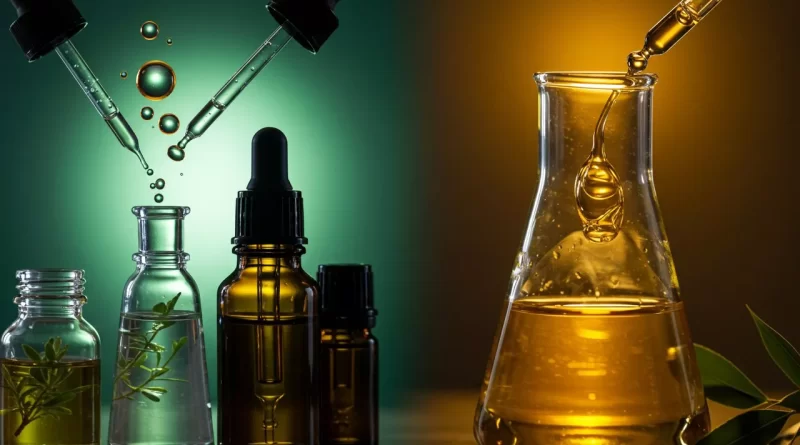Innovative Blending Techniques for Therapeutic-Grade Natural Oils
Unlocking the Full Potential of Nature’s Healing Oils
Therapeutic-grade natural oils have long been valued for their healing properties, from soothing inflammation to promoting relaxation. However, not all oil blends are created equal—advanced blending techniques can significantly enhance their bioavailability, skin penetration, and overall efficacy while adhering to strict organic certification standards.
In this blog, we’ll explore cutting-edge methods for creating synergistic oil combinations that maximize therapeutic benefits.
Why Blending Techniques Matter
Simply mixing oils together isn’t enough to unlock their full potential. The right blending methods can:
✔ Improve Bioavailability – Ensuring active compounds are effectively absorbed by the body.
✔ Enhance Skin Penetration – Helping oils bypass the skin barrier for deeper healing.
✔ Maintain Organic Integrity – Avoiding synthetic carriers or processing methods that compromise purity.
Advanced Blending Techniques for Optimal Results
**1. Liposomal Encapsulation for Enhanced Absorption
Liposomes are microscopic, fat-based vesicles that encapsulate oil molecules, protecting them from degradation and improving delivery into the skin and bloodstream. This method is especially effective for fragile essential oils like frankincense and myrrh.
Best for: Deep tissue penetration, anti-inflammatory blends.
**2. Nanoemulsion Technology
By breaking oil droplets into nano-sized particles, nanoemulsions increase surface area, allowing for faster and deeper absorption. This technique is ideal for CBD oil, turmeric-infused blends, and other bioactive compounds.
Best for: Pain relief, fast-acting topical applications.
**3. Synergistic Carrier Oil Pairings
Not all carrier oils are equal—some enhance absorption better than others. For example:
- MCT Oil (Medium-Chain Triglycerides) – Boosts bioavailability of fat-soluble compounds.
- Squalane (Olive-Derived) – Mimics skin lipids for seamless absorption.
- Jojoba Oil – Balances sebum production while improving penetration.
Best for: Facial serums, long-lasting hydration.
**4. Pulsed Ultrasonic Extraction
This advanced method uses sound waves to break down plant cell walls, releasing more bioactive compounds without heat degradation. The result? A more potent and stable oil blend.
Best for: Full-spectrum herbal infusions (e.g., arnica, calendula).
**5. Phase-Angle Synergy Blending
Some oils work better when applied in sequence rather than mixed. For example:
- Apply a penetration enhancer (like aloe vera or hyaluronic acid gel).
- Follow with a therapeutic-grade oil blend (e.g., lavender + chamomile for relaxation).
- Seal with a protective occlusive (like beeswax or shea butter).
Best for: Layered skincare routines, targeted treatments.
Maintaining Organic Certification in Advanced Blending
Even with high-tech methods, it’s crucial to ensure oils remain:
✅ Cold-pressed or steam-distilled (no chemical solvents).
✅ Free from synthetic emulsifiers (use plant-derived alternatives like lecithin).
✅ Third-party tested for purity and potency.
Final Thoughts: The Future of Oil Blending
As science and tradition merge, innovative blending techniques are revolutionizing how we use therapeutic-grade oils. By leveraging methods like liposomal delivery, nanoemulsions, and ultrasonic extraction, we can create more effective, bio-available, and skin-friendly formulations—without compromising organic integrity.
Which blending technique are you most excited to try? Share your thoughts in the comments!

